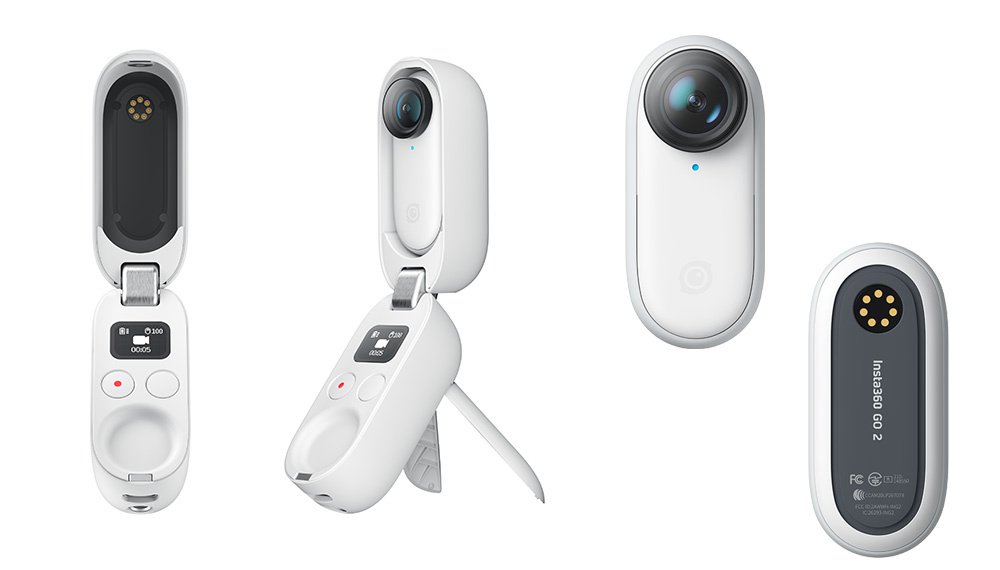Insta360 has just debuted their latest action cam, just in time for the warm weather coming up. Is it worth upgrading?
In 2019, I tested out the original Go camera. I felt it was an elevated approach to Google’s Clip and that most people should consider it before looking at more full-featured action cameras. After all, we’re not all surfers and base jumpers.
My gripes back then seem to have mostly been solved by a new case, not by the camera itself. There’s no longer a protruding lightning cable, instead replaced by a USB-C port. Users are no longer beholden to a 60-second record limit, and the new case allows for real controls. We can also crop in, which is a nice touch, because I don’t always want a chest-mounted camera to see up my nose.
Taking Fun More Seriously
I’ll admit that I was pretty charmed by the minimalism and simplicity of the original Go’s controls. It seemed to only be made for fun. Unfortunately, it meant that you needed to learn what each gesture and click would do. Pressing once recorded a clip, twice for a hyperlapse, and so on.
The Go 2’s case takes the work out of this. I’m sure it will make the camera much easier to use in a pinch. Aside from controls, the case now replaces some of the mounting accessories that came with the original Go. It will act as a standalone tripod, a handle, and has a quarter-twenty mount.
The camera itself is getting less attention in this upgrade. Protective guards and ND filters can now be screwed onto the camera. The slow-motion mode has been bumped from 100 fps to 120 fps, and now, the app can preview and pull footage straight from the camera over WiFi. Let me tell you, that last feature should be included on every action camera release going forward. I’m not sure how I lived without it.
The max recording limits have been bumped up enormously now. You’ll get 30 minutes (the duration of the battery) in FPV mode, 15 minutes with “basic stabilization,” and 10 minutes with FlowState stabilization turned on. Time-lapses can last up to 110 minutes because the camera can sit in the case for extra battery power. The original Go camera was given an update for FPV mode, bringing its top limit up to five minutes.
Specs
While the Go 2 is more of an Instagram Stories camera, here are the important specs for those that want to pixel peep.
- 120-degree angle lens (11.24mm equivalent) with an aperture for f/2.2.
- Night shot, Pure Shot, and Star Lapse modes included, like the more recent Insta360 cameras.
- Photos are taken in INSP or DNG, so need the app for processing.
- 2560x1440 at 50fps for every mode except slow motion, which is limited to HD.
- MP4 format with a bit rate of 80 Mbps.
- IPX8 waterproof rating is good until 13 ft (4 meters).
- The camera battery lasts 30 minutes on its own, and 150 minutes if the case is topping up the battery.
Finally, for the kids and animated aficionados, there will be a Minion edition.

A great idea to use the lens as an eye. I don't believe it makes minion noises, thankfully.
Unfortunately, this upgrade comes with an upgraded price of $299. That’s $100 more than when the original Go launched. I think it’s worth it, but it’s emblematic of the Go 2’s more serious hardware. It will need to compete in a space where it wasn’t previously. You can preorder yours here.





